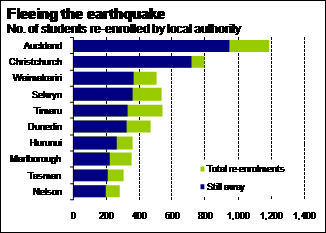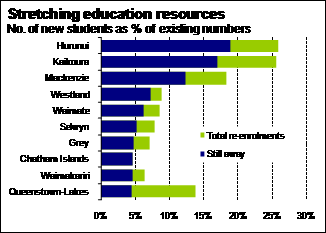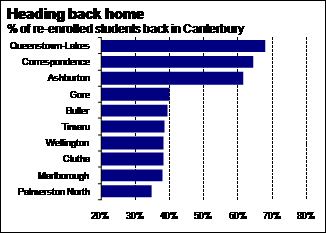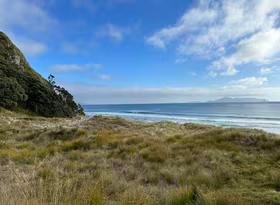Keeping tabs on Christchurch’s population – update April 21
This article updates trends in the re-enrolment of school students from Christchurch and surrounding areas following the quake in February.
Read our original article here
Population movements within New Zealand following the quake have continued to show signs of stabilisation over the past fortnight. The number of students re-enrolling at other schools around the country each week has continued to decline by 40-50% per week. A further 216 students re-enrolled in the week to April 6, with another 129 students re-enrolled in the week to April 13. The total number of re-enrolments since the quake is now 9,663, or 12.7% of the students from the quake zone.
The number of students returning to their original schools also declining, having peaked about a month after the quake. In the week to 6 April, 339 students returned to their original school, with another 276 students having returned by 13 April. The figures mean that 31% of students are now back at their original school. Once we account for re-enrolments within the quake zone and at correspondence school, 6.8% of the quake zone’s school-age population are still in other parts of the country.
Over the past week, another 735 students returned to their original school in the quake zone, which represents a moderate drop-off in the inflows back into Canterbury when compared with the previous week. The latest data shows that 25.5% of re-enrolled students are now back at their original school. Once we account for re-enrolments within the quake zone or at correspondence school, the movements still leave 7.2% of the quake zone’s school-age population in other parts of the country.
There is again little change in our graphs since our last update. The most significant change in Graph 1 is the loss of Ashburton from the top ten as an increasing number of students that had re-enrolled in the district have now returned to their original school.

Graph 1
Graph 2 shows that the pressure on the education system in Queenstown-Lakes continues to ease after the initial influx of students following the quake. In contrast, Waimakariri is still experiencing an increase in re-enrolments as parents seek a more permanent school for their children following the quake.

Graph 2
South Island areas continue to feature heavily in the list of areas that have seen the biggest reversals in re-enrolments since the quake. Overall, 34.2% of students who had re-enrolled in South Island schools have returned to their original school, with a 21.4% return rate from North Island schools.

Graph 3
International migration data for the whole month of February shows no discernible increase in the number of people leaving Christchurch. In fact, the number of permanent departures from Christchurch was up just 7.3% from February 2010, compared with a 13% lift across the whole country as a whole. However, Statistics NZ noted an 83% increase in departure numbers from Christchurch for the final five days of the month (67 more people), which suggests that March data will show a spike in permanent departure numbers.
We also note that some people will head overseas on temporary basis (i.e. for less than 12 months) and will end up not returning to New Zealand. Statistics NZ recorded a lift of about 700 people from Christchurch taking short-term trips overseas in the final days of February following the earthquake, resulting in a 6.3% rise in departure numbers compared with February 2010. Without this lift towards the end of the month, short-term departures from Christchurch would have been about 1.3% lower than February last year, a weaker result than the nationwide decline of 0.1%pa.








